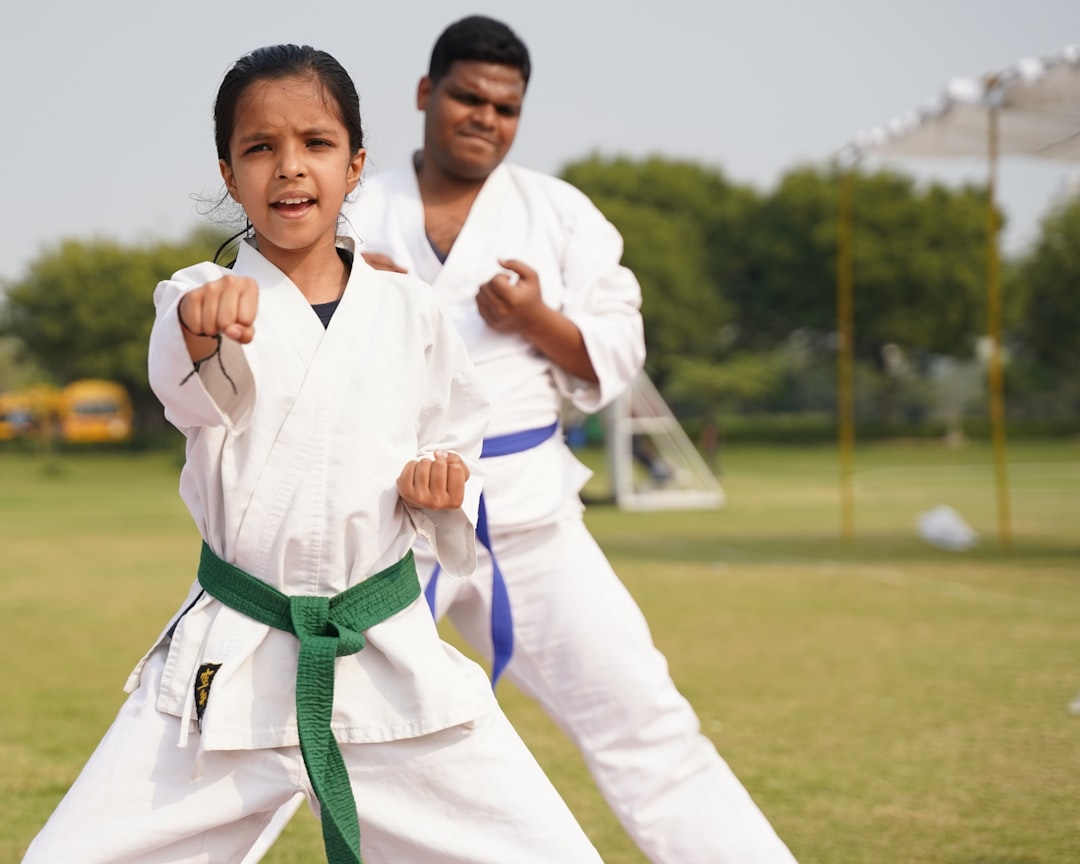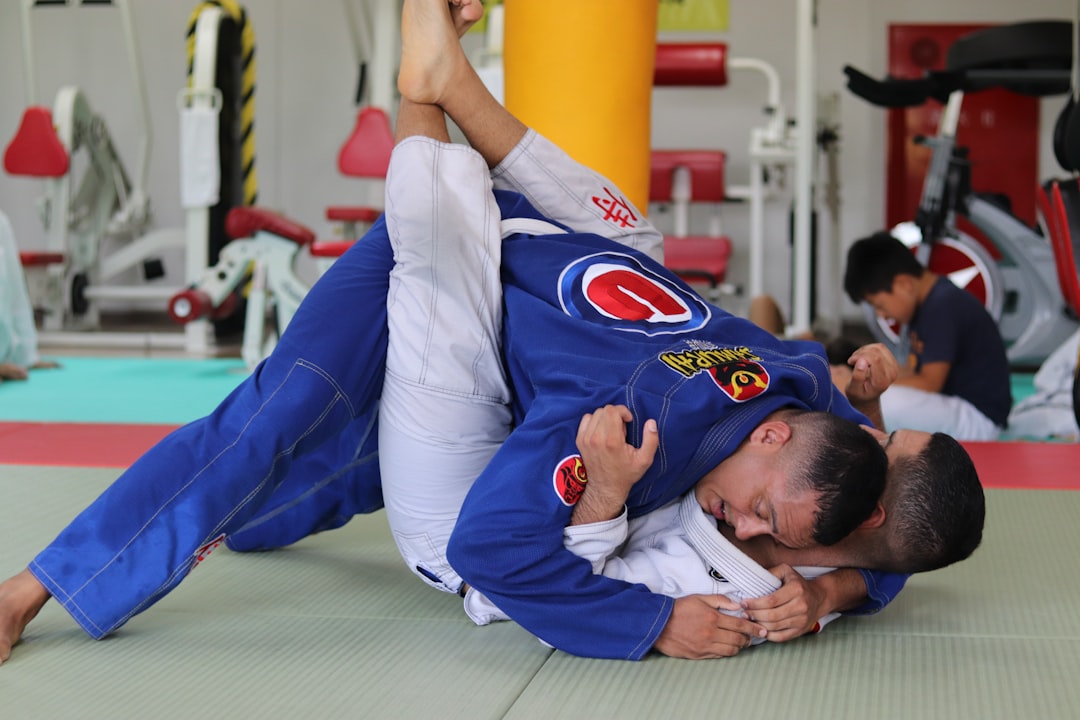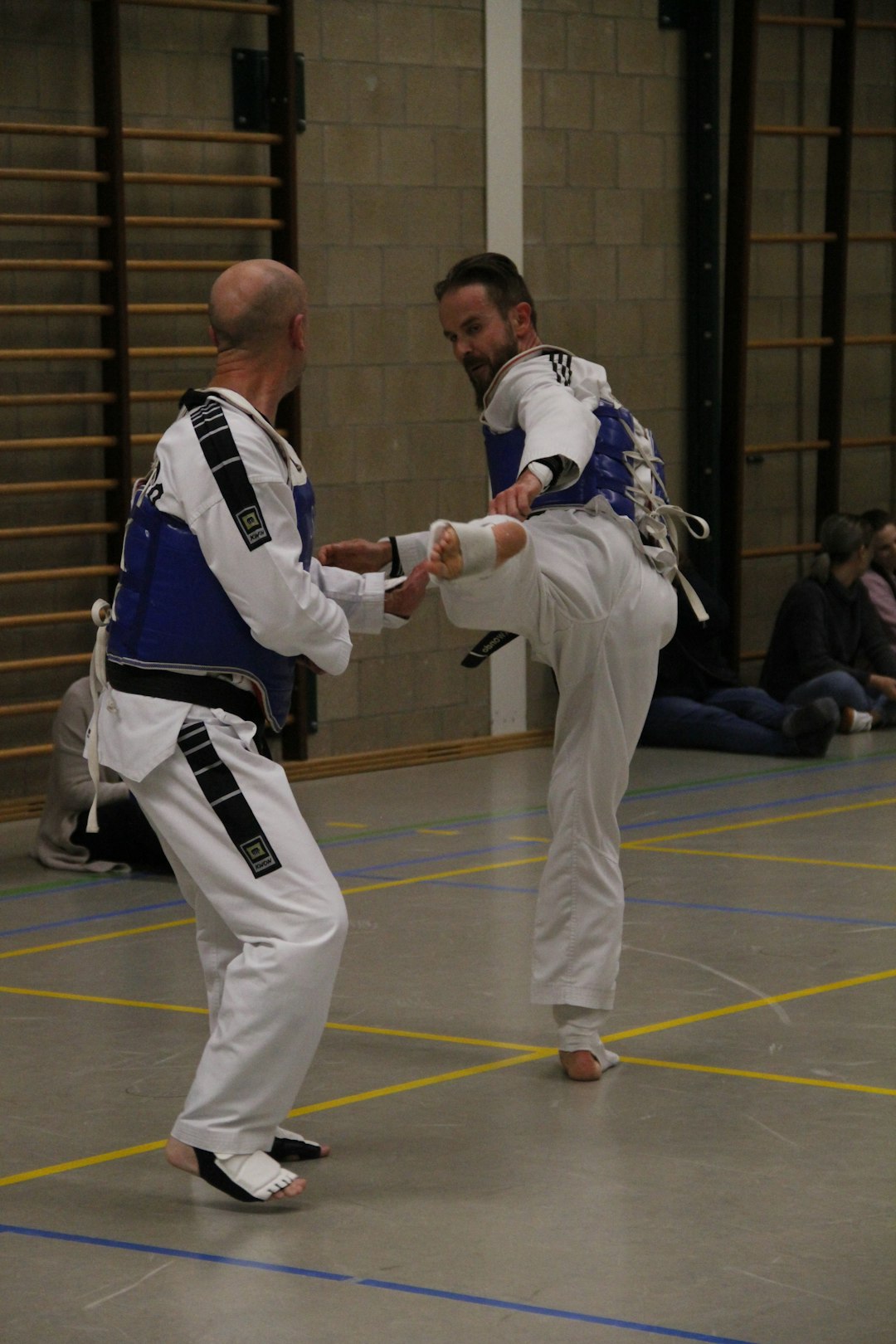The karate uniform, commonly known as a gi, is a traditional martial arts attire consisting of a jacket, trousers, an obi (belt), and sometimes a headband. The gi's design facilitates full range of motion for karate techniques while maintaining coverage and modesty. It traditionally comes in white, symbolizing purity and humility within the karate philosophy. Modern gis are made from durable yet breathable materials like cotton or polyester blends to suit various climates and training intensities. The obi not only secures the trousers but also indicates the wearer's rank. While the gi has evolved over time, incorporating lighter fabrics for comfort without sacrificing functionality, it remains a symbol of karate's rich cultural heritage. When selecting a karate outfit, consider the material's quality and weight, ensuring it offers both durability and flexibility to enhance performance during training or competition. An accurately sized gi is crucial for unimpeded movement and comfort, allowing for safe execution of karate techniques. Whether you prefer traditional or modern styles, your choice of karate outfit should align with your practice needs and personal preferences for an optimal training experience.
exploration of martial arts tradition, this article sheds light on the quintessential garb of karate practitioners worldwide. Often referred to colloquially as a “karate uniform,” its true name is the Gi. Delving into the historical tapestry and cultural significance of the Gi, we trace its origins from ancient Japan to its modern-day adoption in karate dojos globally. Whether you’re a novice or an experienced martial artist, understanding the evolution and selection process of your Gi is key to embracing the full experience of karate. Join us as we unravel the significance behind the karate outfit name and guide you through choosing the right Gi for your practice.
- Unveiling the Essentials: The Composition and Significance of a Karate Uniform
- The Evolution of the Karate Gi: From Traditional Roots to Modern Adaptations
- Factors to Consider When Selecting Your Karate Outfit: Material, Sizing, and Style
Unveiling the Essentials: The Composition and Significance of a Karate Uniform

When practicing the discipline of karate, practitioners adorn themselves in a distinctive uniform known as a gi. The karate outfit, or gi, is a garment rich in tradition and functionality. It consists of a jacket, trousers, a belt – or obi – and sometimes a headband, each element designed to facilitate movement while providing the necessary coverage for various techniques. The jacket, with its open front and long sleeves, allows for a full range of motion, essential for the fluid execution of karate moves. The trousers are tailored to move with the body without hindrance, ensuring that the wearer’s mobility is not compromised during practice or competition. The belt serves a dual purpose: it holds the pants up and also denotes the rank of the practitioner within the martial art. While the traditional color of the gi is white, variations exist; however, the white gi remains the most common, symbolizing purity and humility, traits that are highly regarded in the karate philosophy. What materials are used to construct a karate uniform? A karate outfit is typically made from cotton or a cotton blend, as these materials offer both durability and breathability. Are there different styles of karate uniforms? Yes, while the basic components remain consistent, there are slight variations in style, such as the length of the jacket and trousers, which can differ depending on the specific branch of karate being practiced. Additionally, some styles may incorporate heavier fabric for extra protection during training or competition.
The Evolution of the Karate Gi: From Traditional Roots to Modern Adaptations

The karate gi, commonly known as a karate uniform, has a rich history and has evolved significantly since its inception. Originally, practitioners of karate wore unstructured garments such as kimonos for their training. Over time, the need for a more functional and standardized outfit led to the creation of the gi as we know it today. The traditional gi consists of a jacket, trousers, and a belt, which together signify the rank of the wearer. Made from heavy cotton or hemp fabric, the original design was practical for the martial arts movements it was meant to accompany.
As karate spread beyond its Okinawan roots, the gi underwent modifications to suit different climates and styles. Today’s karate gi varies in weight and fit, catering to both traditionalists and modern practitioners. The fabric has become lighter, offering comfort without compromising the durability necessary for the physical demands of karate practice. Additionally, the cut of the gi has been adapted to provide a better range of motion while still maintaining the traditional silhouette. These adaptations ensure that the karate gi continues to serve its purpose, providing functionality and a sense of unity within the karate community. What is the modern fabric used in karate gis? Modern gis often use lighter fabrics like cotton or polyester blends that provide both comfort and durability. How have changes in the fabric and design of the gi affected the way karateka move and train? The evolution of the gi’s material and design has allowed for greater ease of movement, making it more suitable for the dynamic and precise techniques required in karate practice.
Factors to Consider When Selecting Your Karate Outfit: Material, Sizing, and Style

When choosing your karate outfit, also known as a karate gi, the material is a critical factor to consider. The traditional gi for karate practice is made from heavy cotton or hemp fabric, which offers durability and comfort during movements. Does the fabric allow for ease of movement and withstand the demands of repeated use? A high-quality cotton or hemp blend can provide both longevity and flexibility, ensuring you have a garment that remains functional over time. Additionally, the weight of the material should be suitable for the style of karate you are practicing; lighter materials may be preferable for karateka engaged in competition, whereas heavier fabrics might be more appropriate for traditional or kata practice. Is the material breathable and will it aid in temperature regulation during intensive training sessions? Breathable fabrics can help manage perspiration, making your training more comfortable and effective.
Sizing is another essential aspect when selecting your karate outfit. A gi that is too large can hinder movement and become a tripping hazard, while one that is too small can restrict circulation and comfort. What size accurately reflects your body type and accommodates your range of motion? It’s recommended to try on the gi before purchasing, ensuring it fits well around the shoulders, chest, waist, and legs. Are you able to perform basic karate movements without feeling constricted? Properly fitted garments allow for a full spectrum of motion, enabling you to practice with precision and safety. Style also plays a role in your selection; traditional styles are often preferred for their timeless appeal and authenticity, but some may opt for modern variations that offer updated designs or performance enhancements. What style aligns with your training needs and personal preferences? Whether you choose a classic look or a contemporary design, the most important aspect is how the gi supports and enhances your karate practice.
In summary, the karate uniform, commonly known as a gi, is steeped in tradition and has evolved over time to meet the needs of modern practitioners. This article has explored the composition and significance of a karate gi, tracing its origins from its traditional roots to its contemporary adaptations. When selecting a karate outfit, one must consider material, sizing, and style to ensure optimal performance and respect for the martial art’s rich heritage. Whether you are a beginner or an experienced practitioner, understanding the significance of your karate outfit is key to honoring the discipline and spirit of this ancient practice.
